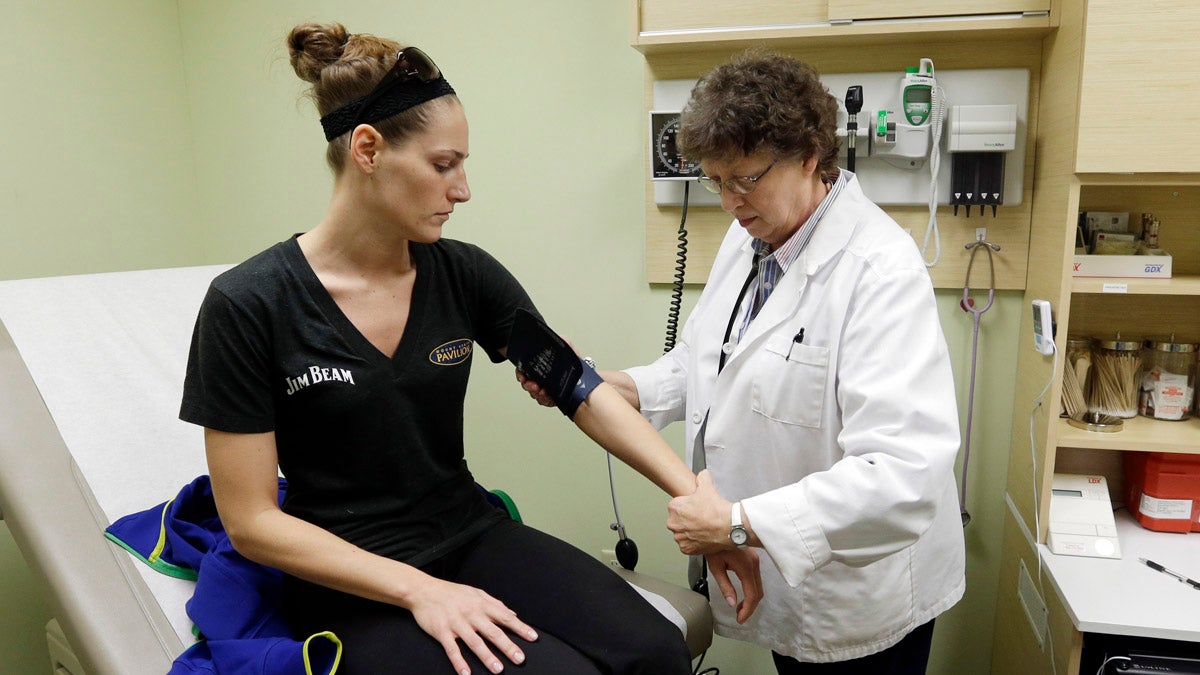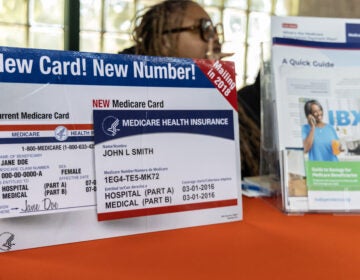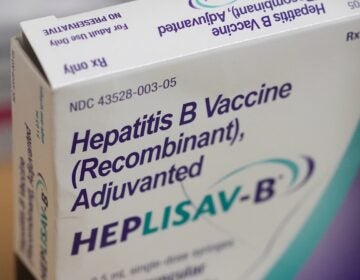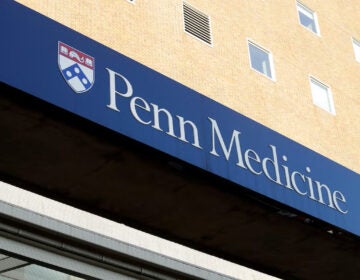Why don’t young doctors want to work in primary care?
Listen 16:24
(AP Photo/Darron Cummings, File)
Half the money and none of the respect, a first-year resident says no wonder new doctors aren’t choosing to be generalists.
In the world of physicians, there are hundreds of specialties—neurologists, orthopedic surgeons, dermatologists, radiologists, anesthesiologists…all the different “ologists.” But doctors generally fall into two camps: the specialists and the generalists, like, for example, your family doctor. As it turns out, there’s a longstanding struggle between these two camps, and a lot of people would say primary care is losing.
As a first-year resident, I found myself wanting to understand why.
I started with a friend of mine. Like me, he graduated from medical school a year ago and is currently doing his residency. We read over his old application essay for medical school and found many references to taking long-term care of patients. I think I expected the same thing at the time as well, but actually, that’s more or less exclusive to primary care specialties. Ultimately, neither my friend nor I went into primary care. I’m specializing in emergency medicine, and he’s in radiology. So the question I couldn’t get out of my mind was why didn’t we go with the obvious choice? Why didn’t we choose primary care?
To figure this out, I spoke to Colin West, a primary doctor and professor of medicine at the Mayo Clinic in Rochester, Minnesota. He’s a prominent researcher on the economics of primary care.
“There’s data to suggest in the mid to late 1990s about 50 percent of all US medical school graduates were choosing primary care careers,” he told me. “And current estimates are that that is below 20%.”
West says the pipeline of future primary care physicians has really slowed down. As a result, today only roughly 30 percent of physicians practice primary care, compared to 70 percent 50 years ago.
And although it’s hard to say for sure, most researchers believe that, with our expanding and aging population, we’re going to have a shortage of primary doctors on the order of 52,000 within a decade. If you consider that an average primary doctor cares for about 2,000 patients, that adds up to a lot of people who can’t get a doctor’s appointment. So you’d think desperate med students would be lining up to fill the demand, right?
Nope.
“A few years ago, only about 6 percent of graduating medical students planned a career in family medicine, and only 2 percent planned a career in general or primary care internal medicine,” laments West.
And every year, primary care residency slots go unfilled. But why not just visit specialists as needed?
The problem is, according to Dr. West, “Primary care is really the front line of medicine. It’s really taking care of the entire patient.”
And that’s important because, without primary care, there’s no one really tying it all together. It’s like a great team with no quarterback. Without a primary provider, no one is coordinating, no one is seeing the whole picture.
Dr. West says primary care requires a holistic understanding of the patient. It sees a problem in the context of the patient’s other medical problems, their personality, their family, their environment—you need a skillset way beyond textbook medicine.
“Subspecialty-driven care without primary care coordination is more expensive,” he says.
That financial perspective was echoed by Dr. G Richard Olds, the founding Dean of the University of California Riverside Medical School and the current president at St George’s University Medical School.
“I think people intrinsically understand they don’t have enough primary care doctors, because they’re having trouble finding one, but as a health system we fail to realize that we’re paying a huge financial price for not having enough primary care doctors,” he tells me.
Most healthcare researchers agree that good primary care is the bedrock of a healthy society.
Countries that value primary care spend less money and have better health outcomes. It’s important work, and it sounds like a great setup for a career right? So why is it that most of my classmates aren’t choosing it?
To get some perspective, I spoke with Zubin Damania, a general internal medicine doctor who trained at Stanford.
“You know for me it started with my dad, who was a classic primary care physician, came from India, did primary care,” Damania recalls. “And from his mouth to my ear as I was entering medical school he said, ‘Do not do primary care, whatever you do!’ Go do dermatology, go do cardiology, be a radiologist. Do something where you have a good lifestyle, make money, and you’re paid to work with your hands, because that’s how our system pays us, it pays you to do things to people not for people, and primary care is doing things for people.”
Dr. Damania went into general practice anyway, but it turns out there are huge forces at work, pushing impressionable medical students away from primary care. The first has to do with a lack of respect.
Dr: West: “Oh well why would you do that? You’re too smart for that.”Dr. Olds: “…told by faculty that they were ‘too smart to go into family medicine.'”Dr. Damania: “You should specialize, smart people specialize, only those who can’t specialize end up in primary care.”
Every medical student I know, including the three respected medical leaders I interviewed for this story, has heard this dis of primary care at some point.
In a system which values technical knowledge over relationships, the doctor who is the authority on a given body part often feels superior to the doctor who is an authority on the patient as a whole.
“I think that goes back to a societal direction,” Damania theorizes, “We’ve drifted off track, we don’t prioritize population health, public health, and the things that primary care infrastructure is so important for. We’re really enamored of the latest greatest technology, the fanciest interventions, the miracle cures. And that’s the subspecialty domain.”
And so primary care—at least within our medical culture—is seen as the domain for underachievers. It even feels like the bias is inherent in the terminology.
I mean, think about the word “specialist.” Who doesn’t want to be special? Who wants to go up to their mom and be like, “Ma, I’ve decided my passion, it’s being…general.”
We could, of course, call specialists “specifists,” after all that would be more accurate. Or we could call the generalists “globalists,” which definitely sounds cooler. But the names have stuck.
Another huge problem is the insane amount of paperwork that primary doctors have to do. A generalist could easily spend her whole day charting, filling out endless nonsensical forms, and using fax machines. It’s an inefficient use of a doctor, and it takes away from face time with patients.
“You’re processing 30 patients a day,” explains Damania, “and trying to get through without hurting anybody or committing malpractice and then doing your documentation in an electronic health record that’s literally a series of click boxes designed by a beancounter who’s never touched a patient.”
And if all that wasn’t enough to drive a generation of doctors away, primary care disciplines tend to be at the low end of the compensation scale for physicians.
In 2015, the average primary doc made $195,000—which from my perspective, is a lot. But the average orthopedic surgeon made $421,000. Now, if you think about going through four years of college, then four gruelling years of medical school, then three to six years of soul-crushing residency, and coming out well into adulthood with a mountain of debt, while all your friends have retirement accounts, and be looking at a salary that’s potentially only a third of what someone who goes into a subspecialty can expect to make? Well, that would make anyone think twice.
The reason for that pay gap is not market demand, reimbursement rates are largely determined by a government committee called the RUC. Across the board, payments are lower for the things primary care doctors do compared to the things specialists do.
Other countries do things differently.
“You know if you look at Great Britain and some other countries, primary care is the apex,” states Zubin Damania. “They’re the top of the food chain. We’re one of the only countries that has more specialists than primary care doctors. That’s crazy.”
And the result is that we spend more than any country on healthcare, but we’re dead last among industrialized countries in every measurable health outcome.
“It is, in part, because we don’t do a good job of keeping people well, keeping them out of hospitals, and managing their diseases in outpatient settings – all of which are tasks of primary care doctors,” says Dr. Olds.
Okay, so this situation is terrible—certainly for primary care doctors, but even more so for us as patients.
But I don’t want to end this story here, because each of our guests today are, in their own way, pushing for change.
Dr. Olds, in his role as former dean and current medical school president, has some ideas. He thinks the problem begins with medical school acceptance.
“I think we are taking the wrong people into med school if what we want to accomplish is more people going into primary care,” he says.
According to Dr. Olds, the overemphasis on GPAs and test scores selects for students who are more focused on individual achievement than community service.
“The other somewhat undiscussed, but I think very concerning trend, is today 80 percent of the medical students come from the top two-fifths of the economic stature,” adds Dr. Olds, “meaning we’re largely training the sons and daughters of wealthy Americans today. And then we’re somehow surprised that they don’t go into underserved areas.”
In fact, at his prior position at Case Western University, Dr. Olds found that the strongest predictor of going into primary care wasn’t GPA, or research—it was having worked in the Peace Corps.
Now, in his current role, he gets to decide who becomes a doctor, and he’s made it his job to stack the deck in favor of primary care. At the University of California Riverside, he used GPAs and test scores as a threshold. In addition to looking at applicants differently, he’s creating different incentives.
If you agree to practice in one of the fields in shortage in an area of need for 5 years, your medical school is free. Public medical schools leave us in the hole for $200,000 on average—a steal compared to $280,000 at the private schools.
Olds isn’t alone. Many are trying to tip the balance back in the favor of primary care.
And there’s data to show that the pay gap between generalists and specialists is decreasing, thanks to the Affordable Care Act.
But it seems like we still need to make primary care cool again, in the eyes of our future doctors.
“It’s very difficult for currently practicing primary care physicians to role model what’s wonderful about general medicine,” says Dr. West. “Because they’re living day to day with these issues that are driving them toward burnout.”
Dr. Damania knows all about that burnout…
“Yeah, so what happened was, after 10 years a hospitalist at Stanford, I realized how broken our system was. And so, it became very dispiriting and when my daughter said, ‘Hey, I want to go into medicine so I can help people too!’ I looked at her like she was crazy. I was like, ‘Who’s helping people? I’m just bandaging people up and sending them out to be sick again.'”
But then he began making music videos. Yeah, you read that right. But why?
“Parodying the system, satirizing the system, and trying to educate patients so they wouldn’t end up in the hospital,” says Zubin.
The videos got millions of views. Which led to TED talks and speaking engagements.
“That gave me an opportunity to work with Tony Hsieh, who was the CEO of Zappos, and he said look I see your videos, I see you’re frustrated, quit your job, move to downtown Las Vegas. I’ll give you some startup money, try to make healthcare better in a way you think makes sense,” says Damania.
So Dr. Demania started Turntable Health and teamed up with another group called Iora Health in Boston. Groups like these practice under a value-based model, meaning they get a chunk of money from insurance groups or employers to keep people healthy. Anything the patient doesn’t need to spend, the practice keeps as profit. So their incentive, unlike the fee-for-service model we’re used to, is to prevent disease and keep patients out of hospitals. That gives them the time to do motivational interviewing, to look at shopping lists, to text and email patients to keep them motivated.
Turntable Health is still in its infancy, and time will tell if their business model will survive, but at least they’re trying to create an environment that rewards quality over quantity. And that attempt just might inspire the medical students and residents who rotate with him.
My guests today aren’t the only ones. If you look around, you’ll see many primary care doctors innovating and challenging the status quo.
“There is going to come a day when it is sexy and cool and awesome to be a primary care doc, where you’re not going to worry about crushing debt and getting out of it because your salary is so small and your debt is so high,” says Damania. “That’s all going to change. So yes absolutely, I think we’re at a sea change in medicine, a tipping point. It’s going to be revolutionary. It has to be otherwise we’re just not going to have the healthcare system we need.”
WHYY is your source for fact-based, in-depth journalism and information. As a nonprofit organization, we rely on financial support from readers like you. Please give today.






